In the folk work, IVA is most often found as a symbol of sadness, and at the same time beauty. High, beautiful spreader trees are found at the roads on the banks of rivers and reservoirs. The long branches of the willow are descending to the earth itself, besides, with an excess of moisture in the soil, they are able to distinguish water droplets, so IVA is called a wrapper. Thanks to the work of breeders, there are currently many hybrid varieties of IW, which have been widely used in decorative gardening.
Content |
Willow: Description
The genus has almost 600 species of plants. Moreover, it can be both trees and shrubs. Most of them grow in the cool part of the northern hemisphere, in Eurasia and North America. The closer to the cold regions, the smaller the size of the plants that have mastered the climate. The smallest representatives of the species are found in the northern regions, and they are so small that their height does not exceed the height of MCH.
Most species have flexible, thin, narrow leaves, long, pointed both from the outer edge and in the cauldron. Flowers Iva in spring, before the appearance of the first leaves, small flowers are collected in the earrings. Separate species bloom after breaking the leaves. After the end of flowering, a fruit is formed in the form of a box with seeds. Little light seeds are transferred to the wind at huge distances. Outdoors retain the germination of short time, but when entering water, there may be favorable conditions for several years.
The most common and frequently found in the middle lane is the representative of the kind - this is Willow White Watching. Adult tree reaches up to 25-30 m in height and lives for about 100 years. Willow Power trunk, gray bark, in the lower part of the tree is covered with cracks. Wheels white wider krone, stretched, casual. The leaves of dark green color, smooth, shiny, from the bottom side light, covered with a whitewash. In the windless weather, the tree is green, but at a light breeze, leaflets move, turning the underside, and the foliage of the tree seems white.
Willow: landing
All willows are unpretentious plants that are in nature almost everywhere. Different varieties of Yves died in different regions, so the landing site and plant species are chosen on the basis of the nature of the terrain.
Place landing
Lightweight and medium drifted soils are best for planting. Place choose well lit, sunny or light half. In full shadow willow do not grow. Even in natural conditions, you are not found in the wilderness of the forest, although they feel great on the edge. To land, you can use a plot with a similar location of the groundwater.
Landing time
WWI with a closed root system is planted at any time of the year, starting with early spring and to late autumn, provided that the seedling sits along with the land of the landing container. The optimal time for planting seedlings with an open root system is an early spring, before the blooming of the kidneys, or autumn, after the end of the coilment. It should be borne in mind that varieties with low frost resistance during autumn landing will not have time to be properly rooted, so when planting the land in the fall under seedlings is mounted with dry leaves of trees and shrubs, and the seedlings themselves are covered with a sweetheart.
Landing
- Dig a landing pit. For shrub forms, the size of the pit is 50 cm in diameter, for woody - 60 cm, a depth of 40 cm. For a saplings of willow with a closed root system, the pit is digging along the size of the earth coma.
- When landing on heavy clays, drainage is needed, for this, 20-30 cm of sand or rubble are poured on the bottom of the landing pit.
- Prepare a nutritional soil from soil, compost and peat mixed in equal parts. Azophosk is added to it at the rate of 200 g per plant and stirred carefully.
- Fill the boarding hole on a third of the cooked soil and placed in it a seedlove.
- The seedloves fall asleep, the soil is torn in such a way that a veil appears to facilitate watering.
- Under each seedling, 2 buckets of water pour.
- If the seedling is high, at first you can set the support number to fix the vertical position of the tree.
Willow: care
In order for the willow to develop quickly and looked attractive, the individual needs of these plants and the peculiarities of the care of them should be known. Willowing Willow Most of all requires attention to the first time after planting the plant.
Watering
Watching Iva is a moisture-loving plant, so it needs frequent watering and spraying. Young plants grow very quickly, especially in the first years of life, some varieties are able to give an increase to 3 meters per year. Saplings are watered once a week, at the rate of 2-5 buckets of water per plant. Watering is made early in the morning or in the evening, after sunset. During watering, water is poured not only under the root, but also on the crown of the plant.
Fertilizer
At the beginning of the vegetative period, the soil under the yoy looser, mulch the peat. The plant is fed by complex fertilizers. All such feeders are spent 2-3 per season, the last feeding is carried out in July. In the second half of August, superphosphate and sulfate potassium are introduced under willow.
Do not leave the foliage foliage under the tree, since it contains tubyl substances that will adversely affect the development of the plant.
Trimming
The first 2-3 years of IVA is growing uncontrollable, and it is not necessary to trim it. Then the tree or shrub rises and the need arises in its formation. The best time for the formative cutting of the willow is spring, after the end of flowering. The exceptions make up the frozen over the winter or broken dry sprigs that are cut in early spring.
Do not be afraid to cut the sprigs of willow, no harm to the plant will bring it. The twigs of decorative species are cut by 10-20 cm, then side shoots are formed from the remaining upper kidneys, and the plant acquires an attractive thick crown. Adult trees are cut every year, cutting off their long hanging branches at an altitude of 2 m from the ground. The trimming is achieved both a spherical or umbrella type of shrubs and trees and the correct rectangular shape when landing Yves as a living hedge.
Reproduction of Willow
Wild-growing willows multiply seeds, in culture most often the plant is breeding with cuttings or chains. The plant grown from the cutter retains all the varietal features of the mother.
Pencornia reproduction
- The cuttings are cut in spring, before the appearance of leaves. Better for rooting is suitable for the weeds of one-two-year-old shoots. The lower cut is made oblique, the top is cut. The cuttings of tall species are cut with a length of 30-40 cm, for shrub forms, a pipe is enough 15-20 cm.
- Before boarding the handle, the willow is lowered into a solution of Kornin for 18-24 hours.
- The finished planting material is stuck in the ground so that 2-3 kidneys remain above the level of the soil. The stalk is allowed both vertically and at an angle to the soil. When landing under the tilt, the lower part is located in the direction of the south or south-east.
- The soil is watered daily 1-2 times a day that the Earth constantly was wet.
- The soil around the young seedlings are regularly twisted from weeds, since at an early stage of development, a weak plant clog high weeds.
The cuttings can be germinated at home, for this they put them in a jar with water, and are waiting for the appearance of the first roots, after that it is planted into the ground.
Successfully rooted and green cuttings, which are cut during the vegetation of the plant. To do this, with a cutlength of 15-20 cm long, the top kidney and the lower sheets are removed, and the upper shock. The cuttings stick into the wet nutritional mixture and organize greenhouse conditions, covering the bank. If seedlings need a lot, form a greenhouse with a film. Surveillance of green cuttings 50-90% depending on the created conditions for rooting.
Reproduction with letters and vaccination
Not all willows multiply cuttings, for some only reproduction is suitable for gifts, or a vaccination on the strak.
- For reproduction with tanks, the roasting threshold with formed the roots of early spring digs, cut off the roots of the seedling are treated with fungicides, and plant a plant to a new place, observing all the rules for planting a new seedling.
- Some types of Yves are grown only on the strain, therefore, to obtain a varietal plant on the surface of the desired height, the branch of the desired varietal plant is vaccinated.
Diseases and pests willow
Even such an unpretentious plant, like Iva, needs to control the state of the health of the leaves and wood.
Diseases willow
From fungal diseases on IWA, mildew, rust, various types of spots, a passage, are found. The emergence and development of fungal diseases contributes to increased humidity, which arose due to the established long rainy weather. To combat such diseases, decorative varieties of IV are treated with fungicides for prevention twice in the season - in spring and autumn, as well as during the season when the first signs of the disease are detected. Wood tall grades are cut so that their branches do not touch the earth. Spores of mushrooms winter in false foliage and spring again amaze plants. Without timely struggle, the colony of mushrooms grow up, and Iva can perish.
We regularly examine the branch and branches of the YV, since the appearance of necrotic signs requires the use of timely measures to combat the disease and the prevention of its development and transfer to other plants. Infected branches are removed to healthy wood, sections are processed. Avoid mechanical damage to the bark of trees, through which, as a rule, falls of diseases.
Preventive treatments from cytospore and diplodine necrosis are carried out in August. If the processing in the summer was not carried out, then it should be carried out in May. Just one processing per season.
Pests Willow
Pests meet on IWA. The caterpillars of the IV Silkward-Lasterki eat leaves, as a result of which shrub or tree loses its decorative look. To combat pests, masonry detected on the leaves and crust are removed, hatched larvae and white butterflies are collected manually and destroyed.
The waves sucks the juices of plants, young kidneys and leaves fall. Eggs Wi winter on the bark of wood, and without the struggle with the pest for next year, new colonies are appear. For the prevention, planting plants that love pests near Willow is avoided. The affected plants are treated with insecticides.
IVA: types and varieties
There are high trees, shrubs and creeping species among Yves. All of them grow rapidly, well adapt to the habitat, resistant to haircut and formation. Consider the varietal features of some of them.
1. Iva Matsudana - High wood, up to 10-12 m, in the natural medium grows in Korea and China. More often for cultivation, its decorative shape is used, which grows in the form of a shrub, its branches are curved, the crown is high-temperature, openwork. For landing is required solar, well lit place.
2. Iva Solnoliste - High splashing shrub. Leaves are oblong, oval, shoots red or yellowish. The shape of the shrub and his leaves resemble a fern. Flowers dark red earrings, making a pleasant fragrance. In nature, grows in raw meadows. Decorative grades of Wall-shaped Willow:
- IVA is a solid hackuro nishiki - a shrub or a small tree with a spherical crown. It has unusually decorative foliage and shoots. Young leaves pink-white, shoots red or olive.
- IVA is a solidist pendula - a flutter shrub, it looks most profitable when vaccinated on the stack.
3. Verba, or Iva Ostroland - Shrub or tree with a strong power of growth, in nature grows near the reservoir, prefers sandy soil. Thin branches, flexible, young shoots are red, with a wax. Leaves are long, pointed, from the bottom side of the nine. Unpretentious look, easily multiplied with stalling.
4. WYA brittle, or rikita, differs from its relative form of the branches of the leaves. The shoots of her fragile, olive green, elongated leaves, pointed, with a sawd edge, from the bottom side of the blue shade. Crown of natural view rounded, asymmetric, openwork. As a decorative type, a spherical shape of the willow varieties of the BULlata \u200b\u200bis used, which has a thick smooth round shape.
5. Iva Babylonian - High Tree with a chic crying crown. It grows up to 15 m, the diameter of the crown reaches 9 m. Successfully applied in greening parks and water bodies. Leaves are long, narrow, sawn, blooms after breaking the leaves.
6. Iva goat - The most common look in gardening. This tree is up to 10 m with a thick crown and wide oval leaves. Young leaves pubescent, with time the upper part becomes smooth. Flowers with large earrings, decorative forms multiply with cuttings, in nature - seeds. A lot of varieties of decorative forms of this type are derived. The most interesting of them:
- Zilbellyanz is a high-temperature variety, especially good during flowering due to a large number of large fragrant earrings. Leaves wide, oval. Well tolerates half, frost resistance is high.
- Mas - a tree or shrub up to 10 m, the crown is stretched, it blooms plentiful. Decorative properties have a male form.
- Weeping - Stammer Men's Form Plant. Growing a maximum of 3 meters. Multiple branches densely hang to the ground. Earrings are numerous, with a pleasant aroma. Very rapidly growing, frost-resistant and shadower.
Willow: photo
Iva Chenical Hakuro Nishiki
Iva Matsudana
WYA brittle, or rikita
Iva Babylonian
Iva goat wrapped
Varietary varieties of IV use for landscaping urban parks, designer design of gardens and parks. The bark and branch of the IW are used for medical purposes, as well as material for weaving baskets, furniture. Help well also showed themselves and as plants used as a living hedge. Unpretentious and rapid growth allowed for 2-3 years to grow a real hedge, which will not only serve as a fencing of the site from the unnecessary guests, but also will decorate it with his unusual attractive appearance.

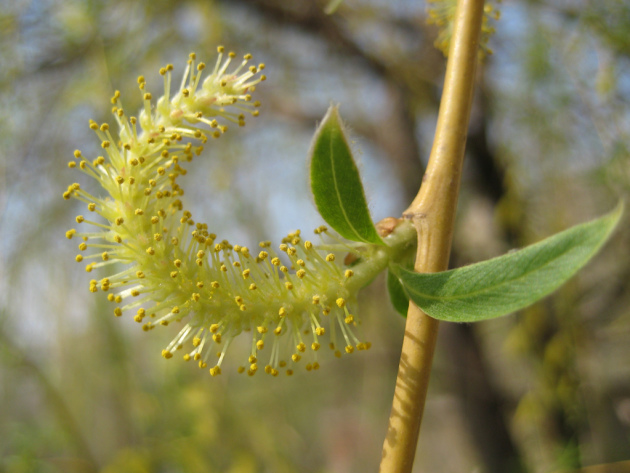
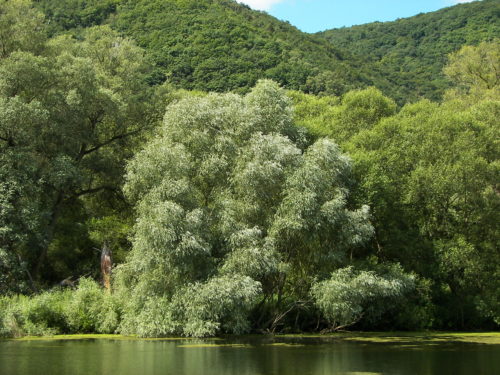
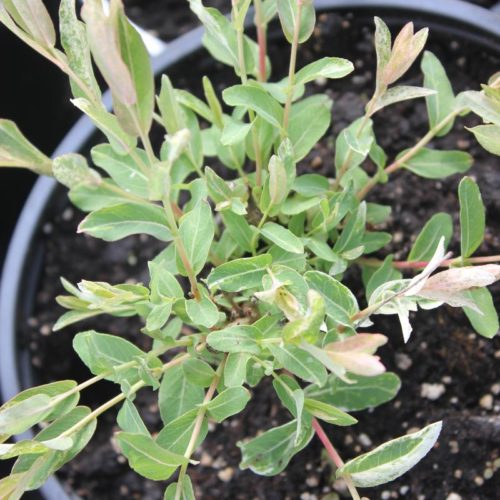
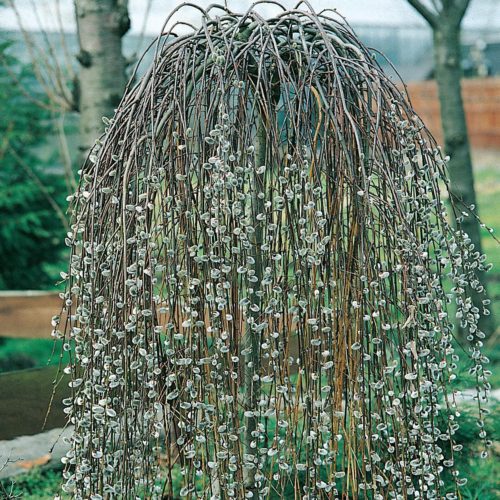
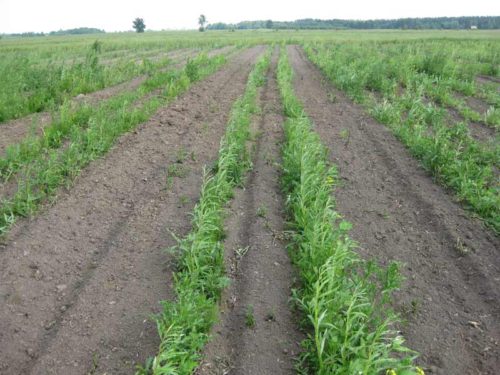
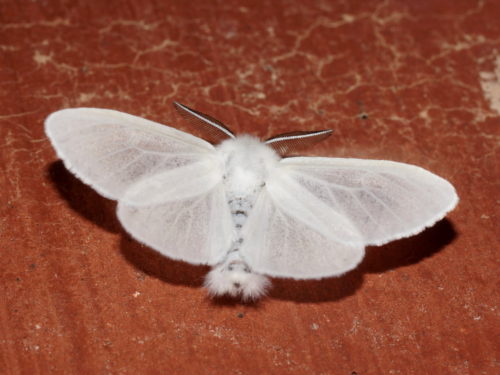
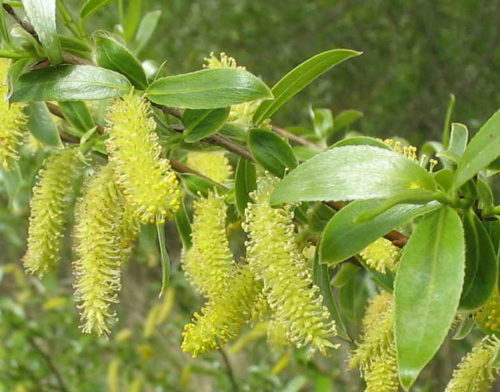
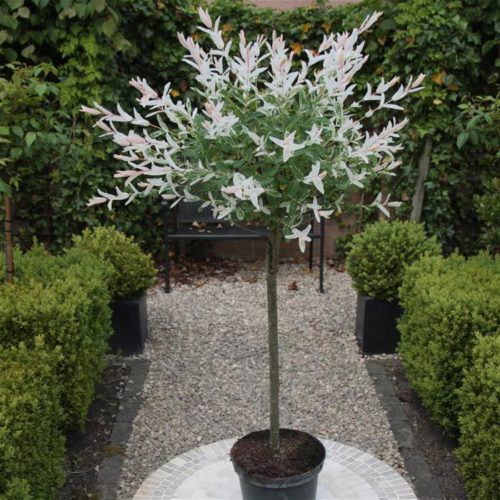
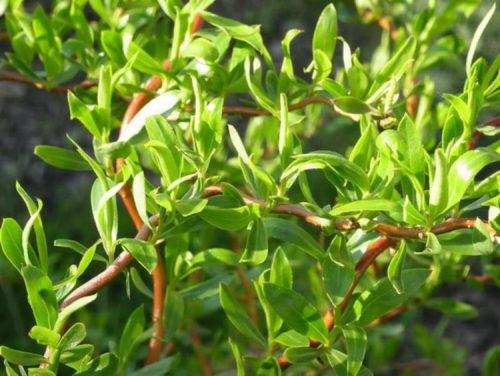
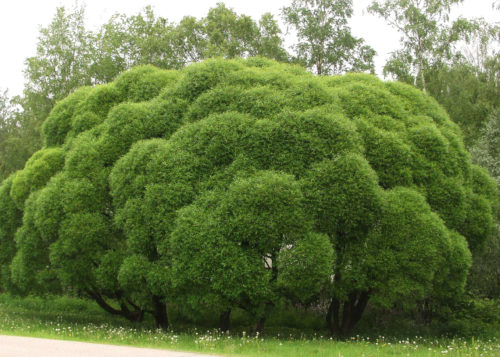
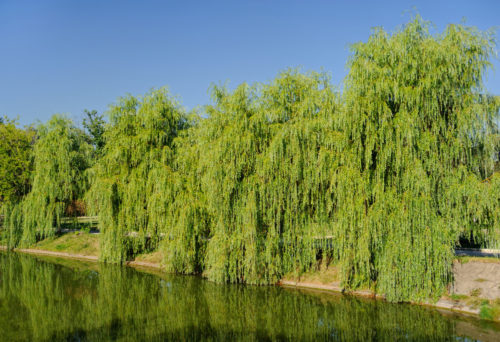
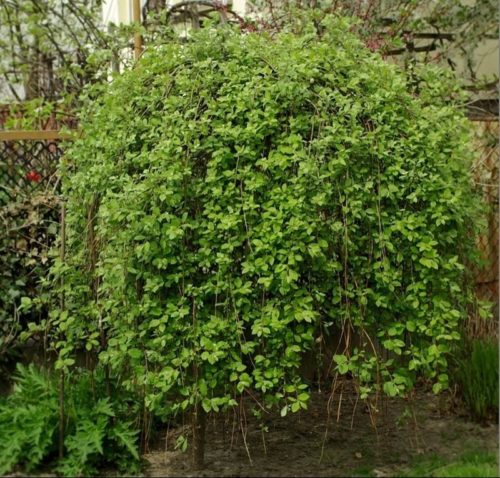












 Start a discussion ...
Start a discussion ...